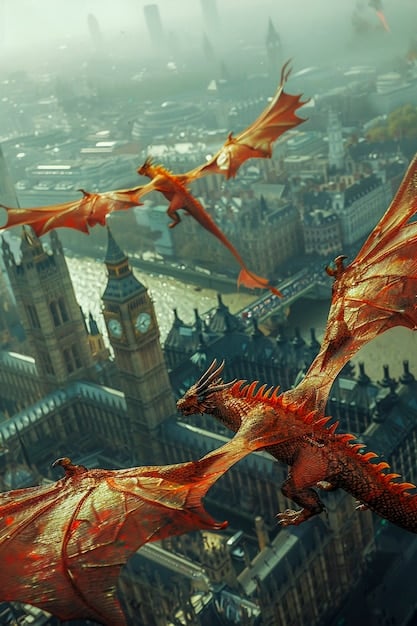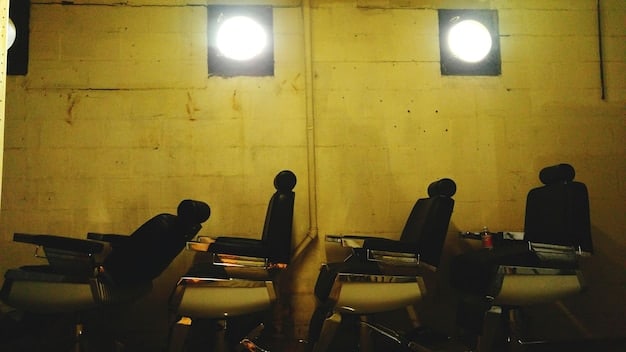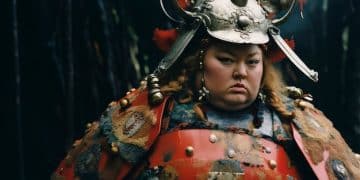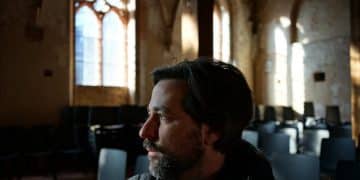House of the Dragon Season 2 Review: Return to Westeros Worth Watching?

House of the Dragon Season 2 grapples with the aftermath of a fracturing kingdom, delivering gripping drama with shifting allegiances and intense power struggles but falls short of its predecessor’s cohesive narrative.
The highly anticipated second season of House of the Dragon Season 2 Review: A Promising Start or a Disappointing Return? has arrived, promising a return to the fiery world of Westeros, filled with political intrigue, dragon battles, and the simmering tensions of House Targaryen.
Return to Westeros: Setting the Stage
Stepping back into the world of Westeros, House of the Dragon attempts to recapture the magic of its first season. With the Dance of the Dragons looming, the stage is set for a bloody and brutal conflict.
The season premiere wastes no time in diving into the aftermath of the first season’s tragic events. The stakes are higher, and the lines between good and evil become increasingly blurred.
Initial Impressions: A Slow Burn?
The initial episodes adopt a more measured pace, focusing on character development and political maneuvering. This approach allows viewers to delve deeper into the motivations and inner conflicts of key players.
However, some viewers may find the lack of immediate action disappointing. The series seems to be building toward a larger conflict, but the early episodes may lack the immediate gratification sought by some.
- Character Depth: The series excels at exploring the complexities of its characters, making their choices feel believable and impactful
- Political Intrigue: The web of alliances and betrayals adds layers to the narrative, rewarding viewers who pay close attention.
- Visual Spectacle: The dragons and costumes remain a highlight, showcasing the high production values of the series.
Despite the slow burn, the foundation laid in these episodes is crucial for the conflicts yet to come. Patience may be required, but the payoffs could be well worth the wait.
Character Arcs: Shifting Loyalties and Inner Turmoil
One of the strengths of House of the Dragon lies in its intricate character arcs. This season continues to explore the complexities of its main players, forcing them to confront difficult choices and grapple with shifting loyalties.
From Rhaenyra’s struggle to maintain her claim to the throne to Alicent’s internal conflict between duty and desire, the characters are put through the emotional wringer. Their decisions have far-reaching consequences, shaping the course of the war to come.

The Evolution of Rhaenyra and Alicent
Rhaenyra and Alicent remain central figures, their relationship evolving in unexpected ways. They are both driven by personal ambition and duty to their families, leading to a constant struggle for power.
The series explores their shared history and the bond that once existed between them, adding layers of tragedy to their conflict. Despite their opposing goals, there are moments of understanding and empathy that humanize both characters.
- Moral Ambiguity: Both Rhaenyra and Alicent are portrayed as complex figures, with flaws and strengths that make them relatable.
- Emotional Depth: The actors deliver powerful performances, conveying the inner turmoil and emotional stakes of their characters.
- Consequences of Choice: Their actions have significant consequences, impacting not only their own lives but also the future of Westeros.
These character arcs are critical to the depth and appeal of the plot, emphasizing the human element amid the dynastic conflict.
Dragon Battles: Spectacle and Strategy
What would a House of the Dragon season be without its dragons? The second season ramps up the aerial action, delivering breathtaking dragon battles that showcase the power and majesty of these mythical creatures.
However, the dragon battles are not just about spectacle. They also serve as strategic tools, shaping the course of the war and highlighting the importance of dragon riders in the fight for the Iron Throne.
Beyond the Fire: Tactical Implications
The dragon battles are meticulously choreographed, blending visual spectacle with tactical considerations. Each dragon has its unique abilities and weaknesses, requiring riders to adapt their strategies accordingly.
The battles are not mere displays of power but calculated moves that have significant consequences on the ground. The destruction caused by the dragons underscores the high stakes of the war.
- Variety of Dragons: The series introduces new dragons, each with its distinct appearance and abilities.
- Strategic Depth: The dragon battles involve complex tactics and maneuvers, making them more than just visual showcases.
- Impact on Warfare: The dragons have a significant impact on the ground, changing the dynamics of warfare in Westeros.
This strategic integration of dragon warfare increases the complexity and realism that fans appreciate.
Political Intrigue: Alliances, Betrayals, and Shifting Sands
Political intrigue remains a cornerstone of House of the Dragon, with alliances forged, broken, and reshaped as the war progresses. The game of thrones is as deadly as ever, with characters vying for power and influence through deception and manipulation.
Every decision has political implications, and no one can be fully trusted. The shifting sands of Westeros create a volatile environment where fortunes can change in an instant.

Who to Trust? Navigating Westeros’ Labyrinth
The political landscape of Westeros is a labyrinth of secrets, lies, and hidden agendas. Navigating this treacherous terrain requires cunning, foresight, and a willingness to betray even the closest allies.
The series excels at showcasing the complexities of these political relationships, highlighting the motivations and calculations behind each character’s actions. The constant threat of betrayal keeps viewers on the edge of their seats.
- Intricate Relationships: The series delves into the complex web of relationships between the characters, revealing hidden alliances and long-standing grudges.
- Strategic Manipulation: Characters use manipulation and deception to achieve their goals, adding layers of intrigue to the plot.
- Unpredictable Twists: The political landscape is constantly shifting, with unexpected twists and turns that keep viewers guessing.
These political elements emphasize the show’s realistic depiction of power struggles.
Pacing and Narrative: Does the Slow Burn Pay Off?
One of the biggest criticisms of House of the Dragon Season 2 revolves around its pacing and narrative structure. The initial episodes adopt a deliberate, slow-burn approach, focusing on character development and political maneuvering.
While some viewers appreciate the added depth and complexity, others may find the lack of immediate action frustrating. The question remains: does this slow burn ultimately pay off?
Balancing Character and Action
The challenge for the series is to strike a balance between character-driven drama and action-packed spectacle. The second season seems to lean more heavily towards the former, which may alienate some fans.
However, the slow burn allows the series to explore the nuances of its characters and the political landscape. This approach can lead to a more rewarding viewing experience, but it requires patience and investment from the audience.
- Depth of Character: The series delves into the motivations and inner conflicts of its characters, making their choices feel more meaningful.
- Building Tension: The slow burn helps to build tension and anticipation, creating a sense of impending doom.
- Narrative Cohesion: The deliberate pacing allows the series to develop a more cohesive and intricate narrative.
The success of this pacing strategy will depend on whether the subsequent payoffs are substantial and engaging enough to justify the wait.
Visuals and Production: A Feast for the Eyes
Despite any narrative shortcomings, House of the Dragon continues to impress with its stunning visuals and high production values. From the elaborate costumes to the breathtaking dragon designs, the series is a feast for the eyes.
The attention to detail is remarkable, creating a rich and immersive world that draws viewers into the heart of Westeros. The cinematography is equally impressive, capturing the grandeur and beauty of the landscape while also conveying the darkness and brutality of the war.
Elevating Fantasy to Reality
The visual elements of House of the Dragon elevate the fantasy genre to new heights. The dragons are brought to life with incredible realism, making them feel like tangible creatures rather than mere CGI creations.
The costumes and sets are equally impressive, reflecting the wealth and power of House Targaryen while also conveying the gritty reality of medieval warfare. The series sets a new standard for visual storytelling in fantasy television.
- Detailed Costumes: The costumes are meticulously crafted, reflecting the status and personality of each character.
- Stunning Dragon Designs: The dragons are brought to life with incredible detail, showcasing their unique characteristics and abilities.
- Immersive Sets: The sets are designed to create a sense of realism, transporting viewers to the world of Westeros.
This strong visual production contributes significantly to the series’ appeal, creating an engaging and convincing fantasy world.
| Key Point | Brief Description |
|---|---|
| 🔥 Dragon Battles | Visually stunning with strategic importance in warfare. |
| 👑 Political Intrigue | Alliances and betrayals shape Westeros’s power dynamics. |
| ⚔️ Character Arcs | Complex, with shifting loyalties and moral ambiguities. |
| ⏳ Pacing | Slow burn approach may test viewers’ patience. |
Frequently Asked Questions
▼
Yes, if you appreciate intricate plots, complex characters, and stunning visuals. Expect a slow burn with political depth and dragon battles.
▼
Season 2 is more deliberate, focusing on character development and political intrigue, potentially at the expense of immediate action compared to Season 1.
▼
Themes include loyalty, ambition, the consequences of power, and the complex relationships within House Targaryen amidst the Dance of the Dragons.
▼
Yes, Season 2 introduces new dragons, each with unique characteristics and abilities, adding depth to the dragon warfare aspect of the series.
▼
Political intrigue is central, with alliances shifting constantly and characters using manipulation to gain power, driving much of the narrative’s tension.
Conclusion
In conclusion, House of the Dragon Season 2 presents a complex and visually stunning return to Westeros, marred by pacing issues that may test the patience of some viewers. While it may not reach the heights of its predecessor in terms of immediate gratification, the season offers a deeper dive into the characters and political landscape, making it a worthwhile watch for fans of intricate storytelling and high-fantasy drama.





